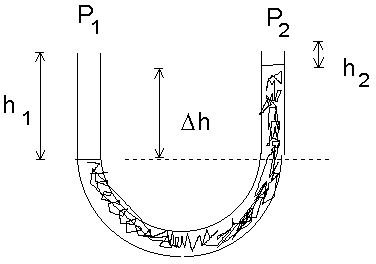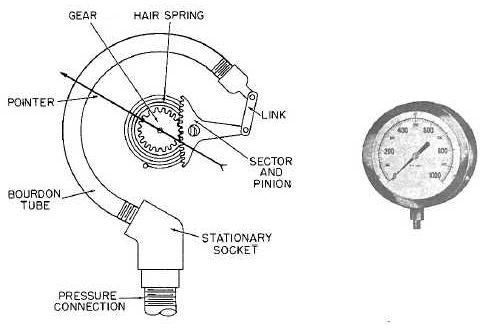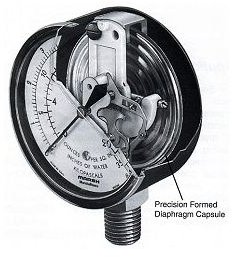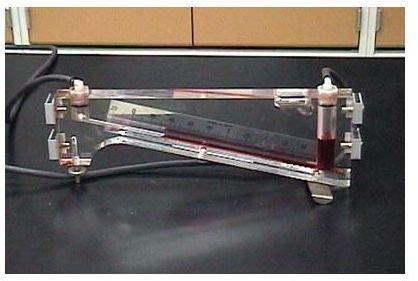Pressure Measurement Devices - Inclined Manometer, Bourdon Gauge, Diaphragm Gauge, Bellows, Pressure Transducers, Electronic Pressure Sensors
Inclined or Sloping U-tube Manometer: It is basically the same U-tube manometer just the tube is inclined at certain angle this time. This results in more deflection in the liquid level in the tube for the same change in pressure. This enables the measurement of small pressure changes with increased accuracy.
Differential Manometer: It is used to measure the pressure difference between two points or between two systems. It is again a U-tube manometer with the two ends of the U-tube connected to the two systems between which pressure difference is to be measured. Depending on the range of pressure difference to be measured, a suitable liquid or combination of liquids can be filled in the two arms of the U-tube. If large pressure differences are to be measured a heavy manometer liquid is filled in the U-tube. And to measure very small pressure difference U-tube with long arms is used and two light liquids are filled in the two arms of the U-tube.

Mechanical Pressure Measurement Gauges
Mechanical Pressure Measurement Devices do not read pressure of any system by deflection of liquid level in some sort of tube. Instead they use some solid object, such as, tube, plate, or diaphragm to measure pressure. The system whose pressure is to be measured is connected to the deflecting object. Any change in pressure causes the object to deflect and this deflection is mechanically amplified, by using a suitable gear and linkage mechanism, and indicated on the calibrated dial.

Bourdon Gauge: The Bourdon Guage has a coiled tube whose one end is connected to the system under consideration and other end is sealed. With the application of the pressure in the tube it straightens up causing deflection of the sealed end. The sealed end is connected to the indicating needle through a gear and linkage mechanism. The deflection of the sealed end results in movement of the needle which moves on a calibrated dial. Bourdon gauges can be used to measure a wide range of pressures. This website offers a more thorough explanation.

Diaphragm Gauge: Similar to the Bourdon Gauge, but has a Diaphragm which deflects on pressure changes and the deflection is indicated on the calibrated scale.
Bellows Gauge: In such gauges indicating needle is driven by the deflection of bellows chamber. This gauge is suitable for measurement of very low pressures.
Pressure Transducers
Pressure Transducers use an electrical system in conjunction with mechanical gauges to convert the deflection due to pressure changes into electrical signals. Pressure Transducers are useful to measure pressures continuously such that the electrical signal supplied to some control system can be used to monitor the pressure variations.
Some typical types of pressure transducers can be capacitive, magnetic, resistive, or piezoelectric.
This post is part of the series: Basics of Hydraulics
Hydraulics deals with the study of fluids, their behavior, motion of fluids and the interaction of fluids with other bodies. In this article series on Hydraulics fluids will be analyzed when in motion and as well as the effect of interaction of fluids with different bodies when static.
